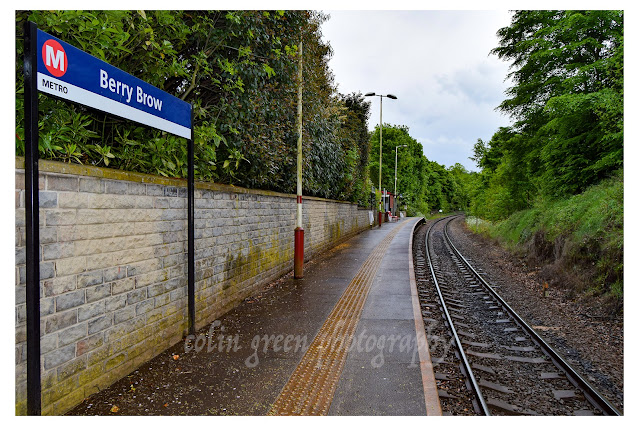In 2015, I embarked on a journey to capture the essence of the Penistone Line, aiming to photograph each railway station between Huddersfield and Penistone. That day, I managed to snap pictures of Berry Brow, Honley, Brockholes, Stocksmoor, Shepley, and Denby Dale. However, a few stations eluded my lens: Penistone and Huddersfield, which I still haven't visited, and Lockwood, which time simply got away from me.
Fast forward to July 25th, 2020. Back in Huddersfield, I finally made it a priority to visit Lockwood and complete my Penistone Line photographic quest. And what a fascinating stop it proved to be!
A Glimpse into Lockwood's Past
Lockwood Railway Station first opened its doors on July 1st, 1850, as a double-platform, twin-track stop. Located approximately 1.5 miles south of Huddersfield, just beyond the Lockwood Tunnel, it quickly became a vital part of the burgeoning railway network. Its significance grew further in August 1868 when it became a junction station with the opening of the Meltham Branch line for goods traffic, followed by passenger transport in July 1869.
The station remained staffed until the 1960s. However, after the closure of the Meltham Branch line in 1965, Lockwood Station, along with the entire Penistone Line, faced years of uncertainty and speculation about its future. Thankfully, the 1980s brought good news: the decision was made for the line to remain open, albeit as a single track. Today, you can still see the overgrown remains of the closed platform at Lockwood, with its connecting tunnel now blocked by a door – a silent testament to its past.
Modern Day Lockwood: A Quiet but Essential Stop
Today, Lockwood Station offers minimal facilities, including a small car park, step-free access, and a basic shelter. Despite its humble appearance, it plays an important role for local commuters. In 2018/19, the station served 40,006 passengers, averaging 769 passengers per week. While this was a decrease of over 11,000 passengers compared to 2015/16, the Penistone Line as a whole continues to be popular and is experiencing steady year-on-year growth. Lockwood Station currently enjoys hourly service in each direction daily.
The Dark History of Yew Green Tunnel
Immediately north of the station lies the 255-yard Yew Green Tunnel, more commonly known as Lockwood Tunnel. This tunnel holds a tragic secret, a grim incident that occurred even before the railway line officially opened.
In July 1849, with the tunnel complete but the tracks not yet laid, a group of men who had been drinking at a nearby inn decided to challenge each other to a race through the dark, unlit passage. Upon emerging, they realized one of their group was missing. Retracing their steps, they made a horrific discovery: the body of John Godly. It was believed he had tripped and broken his neck during the ill-fated race through the tunnel. A sobering reminder of the dangers inherent in the early days of railway construction.
Lockwood Station, with its rich history and quiet present, stands as a testament to the enduring legacy of Britain's railways. It's a place where you can almost hear the echoes of steam trains and imagine the lives that have passed through its platforms over the last 175 years.
Further Incidents and Industrial Echoes
The Yew Green Tunnel's unfortunate history doesn't end with John Godly. In March 1869, it was the scene of a rail crash when a passenger train and a goods train collided within its confines. Driver error was determined to be the cause, resulting in three injuries.
Just south of Lockwood Station, you'll find the impressive Lockwood Viaduct. While I didn't have time to photograph it on this visit, it's definitely on my list for a future trip! Interestingly, between the viaduct and the station lie the remains of the coal drops. These eight former coal drops, which once served the area's industrial needs, still stand today, repurposed as a car park. They also feature a tunnel that connects both sides of Howarth Lane, offering another intriguing glimpse into the past.

































